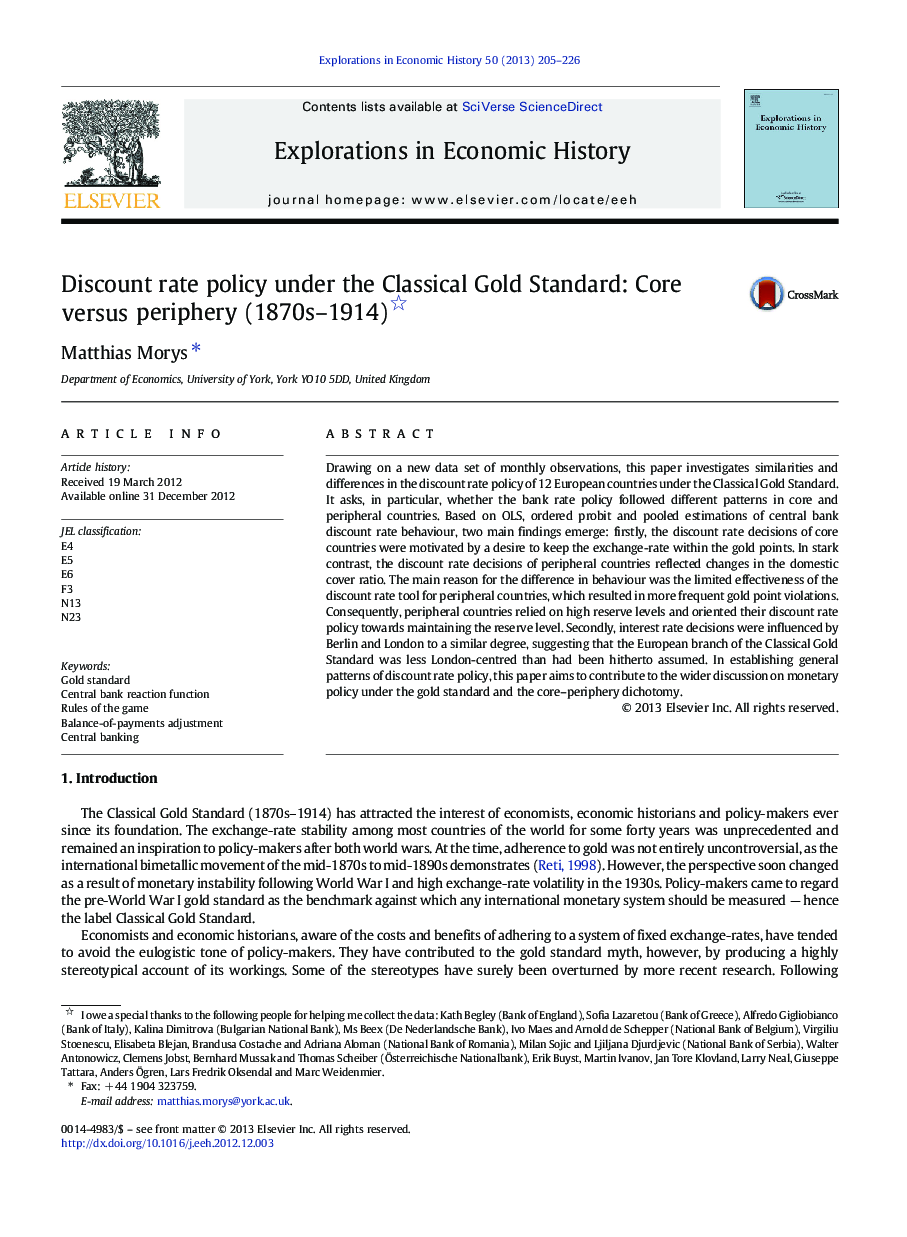| Article ID | Journal | Published Year | Pages | File Type |
|---|---|---|---|---|
| 5068851 | Explorations in Economic History | 2013 | 22 Pages |
Abstract
Drawing on a new data set of monthly observations, this paper investigates similarities and differences in the discount rate policy of 12 European countries under the Classical Gold Standard. It asks, in particular, whether the bank rate policy followed different patterns in core and peripheral countries. Based on OLS, ordered probit and pooled estimations of central bank discount rate behaviour, two main findings emerge: firstly, the discount rate decisions of core countries were motivated by a desire to keep the exchange-rate within the gold points. In stark contrast, the discount rate decisions of peripheral countries reflected changes in the domestic cover ratio. The main reason for the difference in behaviour was the limited effectiveness of the discount rate tool for peripheral countries, which resulted in more frequent gold point violations. Consequently, peripheral countries relied on high reserve levels and oriented their discount rate policy towards maintaining the reserve level. Secondly, interest rate decisions were influenced by Berlin and London to a similar degree, suggesting that the European branch of the Classical Gold Standard was less London-centred than had been hitherto assumed. In establishing general patterns of discount rate policy, this paper aims to contribute to the wider discussion on monetary policy under the gold standard and the core-periphery dichotomy.
Keywords
Related Topics
Social Sciences and Humanities
Arts and Humanities
History
Authors
Matthias Morys,
